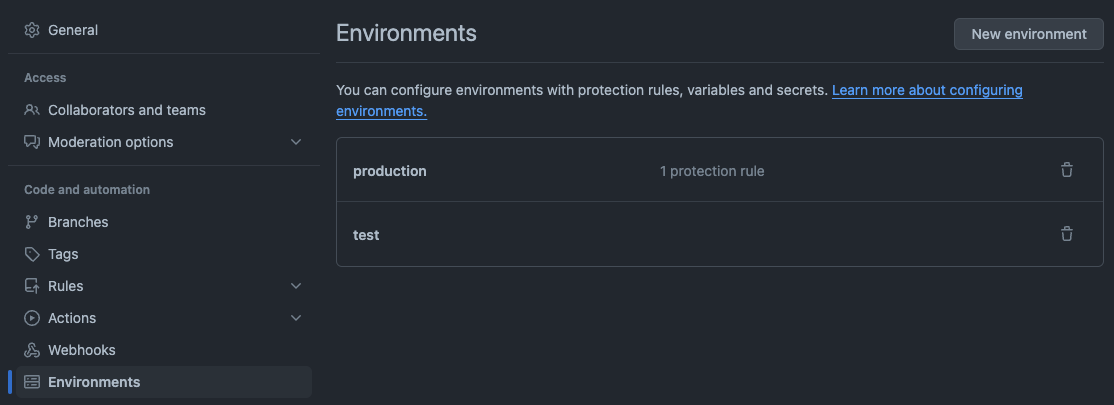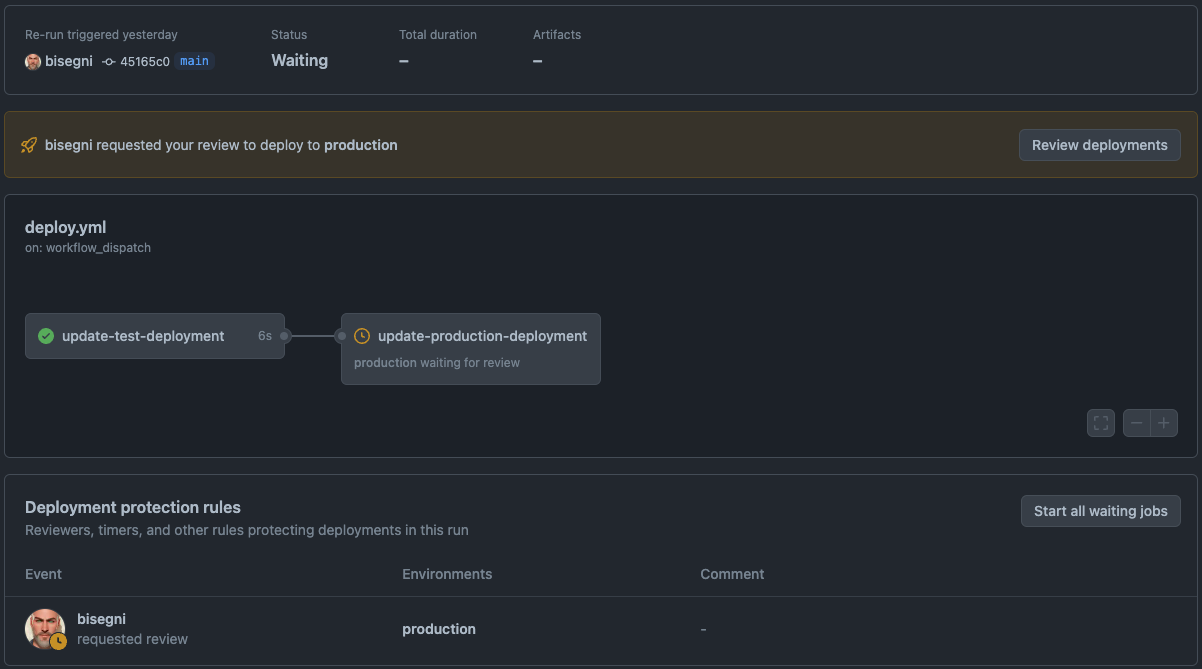| Table of Contents | ||
|---|---|---|
|
At EED we have two k8s cluster accel-webapp-dev and accel-webapp respectively for testing and production deployment. In this article we are going to describe how CD/CD has been implemented to achieve CI/CD (Continuous Integration and Continuous Delivering). each one environment is identified by his hostname accel-webapp-dev.slac.stanford.edu and accel-webapp.slac.stanford.edu.
...
The Deployment Project is a dedicated Git repository that houses the configuration for both the test and production Kubernetes environments. This architecture is strategically designed to segregate duties, granting differentiated access levels to development personnel and deployment managers. Such a setup enhances security and governance, ensuring that only authorized individuals manage the deployment aspect of the application lifecycle. Usually our deployment project looks like the below image:
The deployment procedure commences with a designated initiation trigger with a parameter: the complete Docker image name accompanied by its corresponding tag (e.g., docker-image:tag). This image and tag denote the specific build that has been vetted and is ready for deployment. Upon activation by this trigger, the deployment workflow engages in an automated sequence to update the Kubernetes deployment resource. This is meticulously carried out within the test environment's configuration file directory located in the Git repository. Following the automated update, the process enters a holding state, mandating a manual review and intervention. This step serves as a quality gate, necessitating a deliberate action to authorize the promotion of the updated configuration to the production environment. On github this implemented using the 'environment' and protecting the deployment one giving authorization:
the wait trigger, on github looks like the one on the below image:
This enforced pause is integral to our deployment strategy, introducing a critical checkpoint to validate system stability and operational readiness. It ensures that all updates undergo a thorough vetting process, reinforcing the integrity of our production environment. Finally the synchronization between the state of the cluster and the git configuration is automated using argocd that is a declarative, GitOps continuous delivery tool for Kubernetes. Each environment (test, production) has his designed argocd instance that manages the specific cluster.
Deployment Flow Recap
1. Code changes are pushed to `Project A GitRepo`.
2. A CI pipeline compiles the code and runs tests.
3. Upon successful testing, a Docker image is built.
4. The image is tagged for pre-production and deployed to the pre-production cluster using Argo CD.
5. After successful deployment and testing in pre-production, a human promotes the configuration for production deployment.
6. Argo CD synchronizes the production cluster with the changes from the production Git repository.
...


